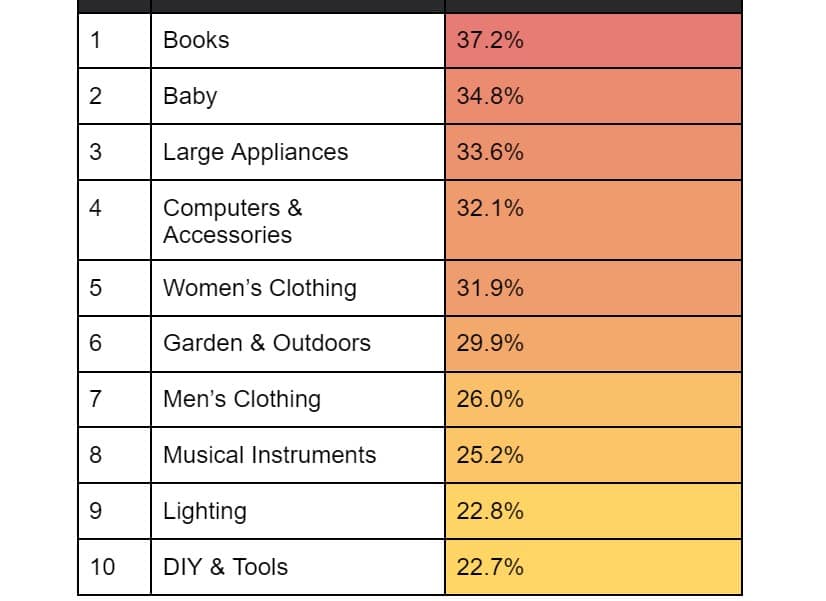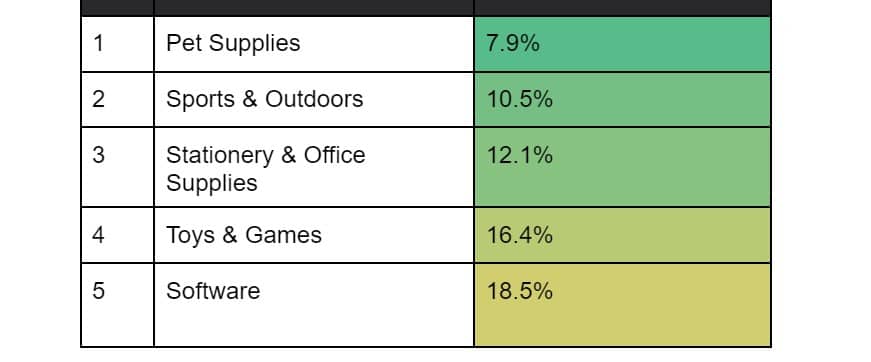When you buy something on Amazon, it’s almost second nature to read some of the reviews other buyers have left, and this can often make the difference between sale and no sale. But there’s a problem with many of these reviews—they’re fake. Shady sellers have been quick to take advantage of consumers’ trust in reviews, and crowd their own review pages with fake five-star ratings.
Just how many product reviews are fraudulent? To find out, consumer protection firm Scams.info analyzed ratings for Amazon bestsellers to uncover which products have the biggest boost by fake reviews.
The most untrustworthy Amazon reviews:

Book reviews are the most untrustworthy on Amazon
Almost 2 in 5 (37.2 percent) book ratings are fraudulent, the most of any product category, the research reveals. After analyzing Amazon’s bestsellers, the experts uncovered that for 59 percent of products, over 40 percent of ratings were fake. For 1 in 20 books, over 90 percent of ratings were illegitimate.
Shockingly, baby products also receive an extreme amount of fake reviews
Over a third (34.8 percent) of ratings on Amazon’s baby range are artificial, and 1 in 16 products had 90% of reviews determined to be fake. Reviews for high-value items like ‘Large Appliances’ and ‘Computers & Accessories’ are also untrustworthy, at 33.6 percent and 32.1 percent fake rating respectively.
The most trustworthy Amazon reviews:

Only 7.9 percent of reviews for ‘Pet Supplies’ are fake, the only products with less than 10 percent fake reviews, and 29.3 percent fewer than ‘Books.’ Those purchasing ‘Sports & Outdoors’ (10.5 percent) and ‘Stationery & Office Supplies’ (12.1 percent) products can also take comfort in the knowledge that less than 15 percent of reviews are artificial.
Methodology:
- 20 popular categories on Amazon.co.uk were chosen for analysis to determine which had the most fake reviews.
- The top 50 best selling items in each category were analyzed.
- Independent review analysis tool Review Meta was used to scrape reviews for each product. Data gathered included the original rating, the quantity of fake reviews, and a new review score once fake ratings were removed.
- Where the last analysis was done before August 2023, the product was run again for a more recent analysis.
- Finally, results were aggregated and by category and ranked by percent of fake reviews.
- Original data analysis was conducted 5th September 2023 and is accurate as of then.








